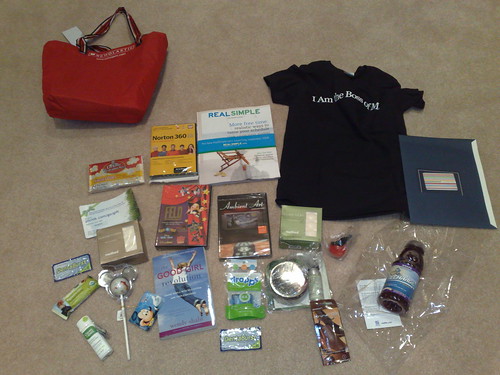I just got back from the pre Blogher party at Guy Kawasaki’s house, even today, as I gave a social computing workshop, I heard from yet another brand that they are desperately trying to reach women bloggers. Why? Well first of all, many of them control the financial spending at the household (ahem, that’s true at my house) and they are also ‘creators’ with blogs, pictures, video and podcasts –they’re influencers. With so many brands understanding the new “Google” world, where influence can happen from digital creators, they do what they can to reach them.
I spoke to a few of the bloggers trying to find out what works and what doesn’t. One indicated that when brands pitch them, they should really read their blog to understand their editorial agenda. I talk to brands, and they think it’s a mob rush to reach these women, and therefore very difficult to get in front of them.
I was talking to many female bloggers and learned that one of the party organizers from Kirtsy that about 50 brands submitted schwag for this pre party (although as you see above, only about half made the bag). I took a picture of the good stuff that I brought home (for once, says my wife). Also, Blogher received $5 million in funding this week (update: read interview, link via Chris Bishops) to build an advertising newtork, and the Blogher conference will have about 1,000 attendees in SF, many having traveled all over the country.
Now despite the attention being given to this hot market, I see two major problems. First of all, this market is already getting statured by marketers pitching these influential women, secondly, some of them (as I’ve heard) are not fully disclosing how they recieve these products, whether or not they keep or give them away.
So my questions to you is this:
When this organic and natural market gets saturated from the many vendors pitching at them (would make Scoble blush) what impacts does this have to: 1) credibility of the women bloggers, 2) Effectiveness of brands trying to reach this inundated market? 3) If credibility and demand is reduced to this market, will it decrease their influence? How will they be able to maintain these levels? I think something has to give.
I certainly home someone reads my above questions at blogher to the female congress, it’s a real issue that I hope they address.
Key Update 12 hours later (a moment of clarity):
First, to be very clear, it’s not the character of the bloggers I’m challenging, it’s the economics of great demand for a limited supply, please don’t misconstrue this.
After a good night’s sleep (something I rarely get) I can see what’s going to happen now:
1) The opportunities for brands to get in front of bloggers to review products has become saturated, pitching to them has become less than effective.
2) Therefore, the advertising network that blogher, sugar, glam, or others puts forth where be where the excess demand goes, brands will simply pay to advertise their products on the major nodes of the network, based on other blog network models, there will be little trickle down for b-a list bloggers in this space.
3) The credibility of “blogger review” will be reserved for a few products, but the supply of excess product marketing demand will be alleviated through a blog advertising network.
History shows that marketers are great at figuring out avenues where there is less friction.




Edit: thanks to anna for noticing my typo

Swag has been part of the game since the advertising industry was hatched in the late 50s, nothing new, or exciting here, just a new audience, acting like it’s a brand new world, and to them, it is, complete with all the endless ethics and disclosure dust storms, long since fought and won in things journalism.
But once companies start really applying metrics, and realize how actually small and ineffective these micro-audiences are, the wanton exuberance swag-element will drop. When in doubt, aim the freebie chain-guns on anything that halfway moves and pitch to celebrities, which is the extent of the creative thinking that passes for marketing these days.